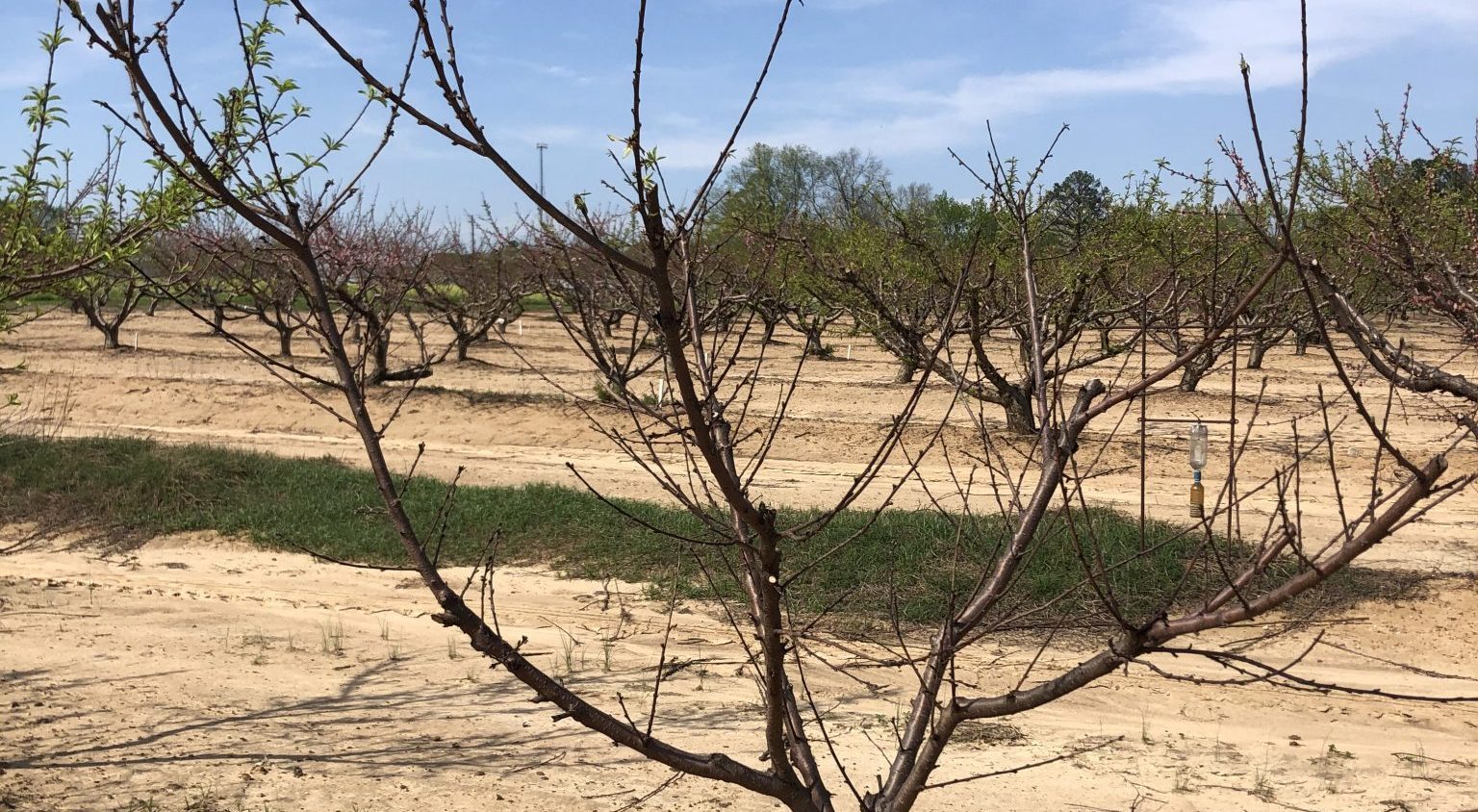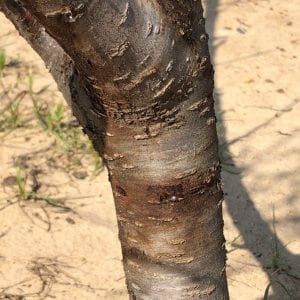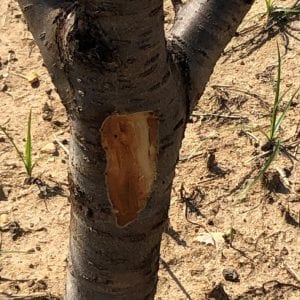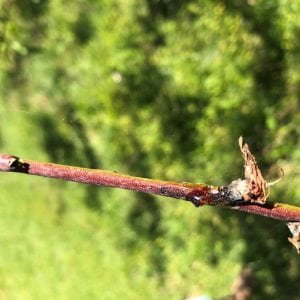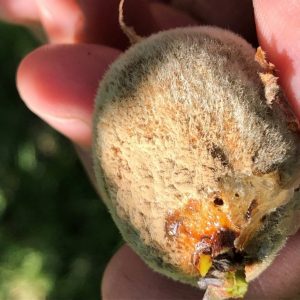Crop Production

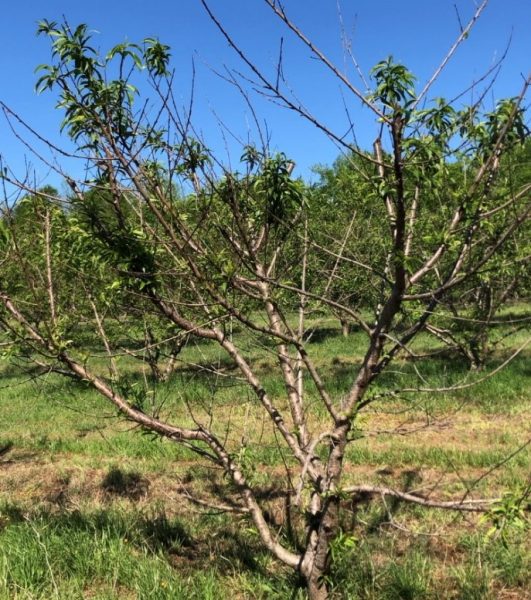
Figure 1. Peach tree exhibiting shoot and branch dieback.
The arrival of fall brings cooler temperatures and reduced sunlight. These conditions drive deciduous trees to their long winter slumber called dormancy. Unfortunately, some diseases and insect pests remain relatively active during this period. Pest prevention spared in fall and winter will result in a challenging spring and summer for crop production. Last season, peach trees and other crops were exposed to a variety of factors, which resulted in plant stress and significant yield losses. Production practices that minimize stress to the tree will help to minimize damage caused by disease and insect pests and extreme weather events.
Diseases
Peach trees are often noticed having sparse fruit load and considerable dieback of shoots and branches, including entire scaffold branches in many cases. Trees also exhibit sparse leaf coverage with small leaves. Shoot and branch dieback is a hallmark symptom of Armillaria root rot (ARR) a devastating soil-borne fungal disease (Figure 1).
The pattern in which these conditions occur, however, sometimes indicate that conditions were not just related to ARR. Shoot dieback is also a symptom of another fungal disease known as phomopsis. This disease causes a canker that girdles the shoot and causes death to tissue beyond the point of infection. Learn more about Phomopsis in Disease Alert: Phomopsis Twig Blight Common on Peaches this Spring provides more information about phomopsis.
Because of undue stresses, some peach trees succumb to diseases for which they have resistance or tolerance, such as peach tree short life (PTSL). Peach tree short life is caused by a combination of factors, one of which is ring nematode infestation of roots. This root feeding causes susceptible trees to be less tolerant of cold weather, which leaves the trees vulnerable to the development of bacterial canker. Bacterial canker is caused by the bacterium Pseudomonas syringae pv. syringae. A canker forms at the infection causing plant dieback beyond this point. Bacterial canker is lethal when it occurs on the trunk (Figures 2a and 2b).
- Figure 2a. Moisture oozing from bacterial canker under bark.
- Figure 2b. Bark removed revealing canker.
Another fungus known as Monilinia fructicola can also cause fruit dieback. This fungus causes brown rot in fruit that are nearly ripe or ones that are ripe on the tree or in storage. When conditions are more challenging, it can affect green fruit in a condition known as green rot. Monilinia fructicola can also affect the bloom stage similar to Pseudomonas by forming a canker at the base of a bloom. This is known as blossom blight. In response, an amber-colored gel will ooze from the base of the bloom (Figures 3a and 3b).
- Figure 3a. Amber gel oozing from base of a peach blossom.
- Figure 3b. Monilinia fructicola infection of green fruit called green rot.
Temperatures
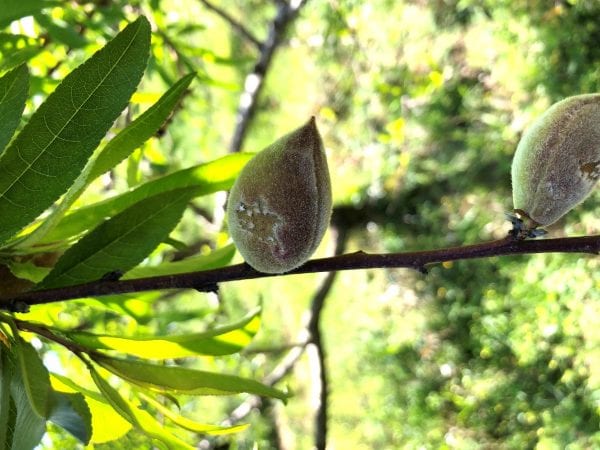
Figure 4. Developing peach fruit exhibiting a scar that is an indication of earlier cold damage.
For dormant buds to become resistant to low temperatures, they must acclimate to the cold. This is accomplished by exposure of dormant buds to cool but not damaging temperatures. High, summer-like temperatures can stretch into the fall only to be followed by an abrupt drop in temperature. The abrupt change did may not allow buds to become sufficiently acclimated to cold temperatures. As a result, buds will likely be damaged. Low temperatures occurring in February will likely affect early blooming varieties. In many cases, buds survive low temperatures, but the effects of low temperatures can still be seen on some surviving fruit (Figure 4). Damage to fruit or shoots created by low temperatures can serve as infection routes for disease.
Lack of chilling alone or when combined with other factors can stress trees and further exacerbate other stresses. Additionally, lack of chill results in a protracted bloom period allowing blooms to be exposed to potential infection with brown rot. For more information on chill accumulation, see Fruit Culture in Alabama: Winter Chilling Requirements and Chill Hour and Chill Portion Comparison in Peaches.
Insects
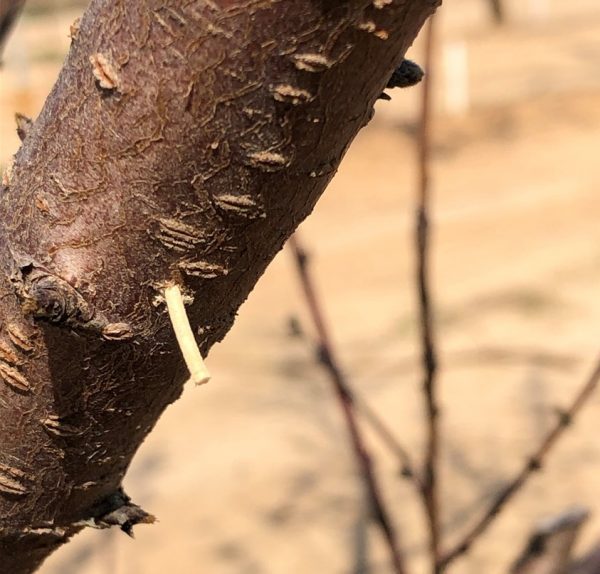
Figure 5. Peach tree with matchstick which is sawdust being extruded from a hole created by an ambrosia beetle.
When trees are stressed, they emit ethylene, which can be detected by insect pests, such as ambrosia beetles. Ethylene is a signal to these beetles that the tree is in a weakened state and is ideal to colonize. Growers can determine if they have ambrosia beetles if they see a protrusion of “matchsticks,” which are a combination of sawdust and beetle feces (Figure 5). This mixture is pushed out from holes created by the female beetle as she excavates a tree trunk or branch to create a place to lay eggs and raise young. Peach tree borers also track stressed or declining trees, which provide an ideal location to lay eggs.
Plan and Prepare
The most efficient way to reduce these factors is to have an orchard management plan before and after it is planted. Even the most careful planning cannot prevent all of the environmental pressures on crops. However, proper planning and adherence to established protocols can reduce the damage that results from these conditions.
- Site selection is important to the production and longevity of a peach orchard. Select land that is not prone to standing water. Placing an orchard on a sloped area that allows proper water drainage and cold air is important.
- Select the best trees for the area. For example, planting trees that have high chill hour requirements well beyond those the area is known for will result in trees that are in a continual stage of stress. Likewise, trees that have a chilling requirement that is too low will likely result in early blooms that become damaged by a late-season frost. For management and production of peaches, consult the most recent version of the Southeastern Peach, Nectarine and Plum Pest Management and Culture Guide.
- Apply insecticides and fungicides at the appropriate time to reduce or prevent the occurrence of these pests. Well-timed fertilizer applications will promote growth and better health of the trees.

